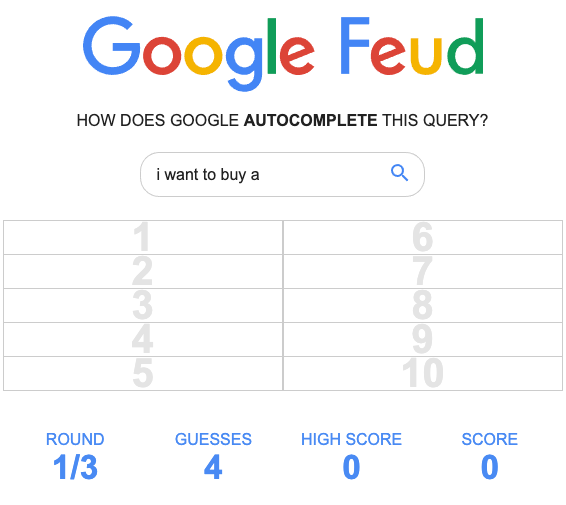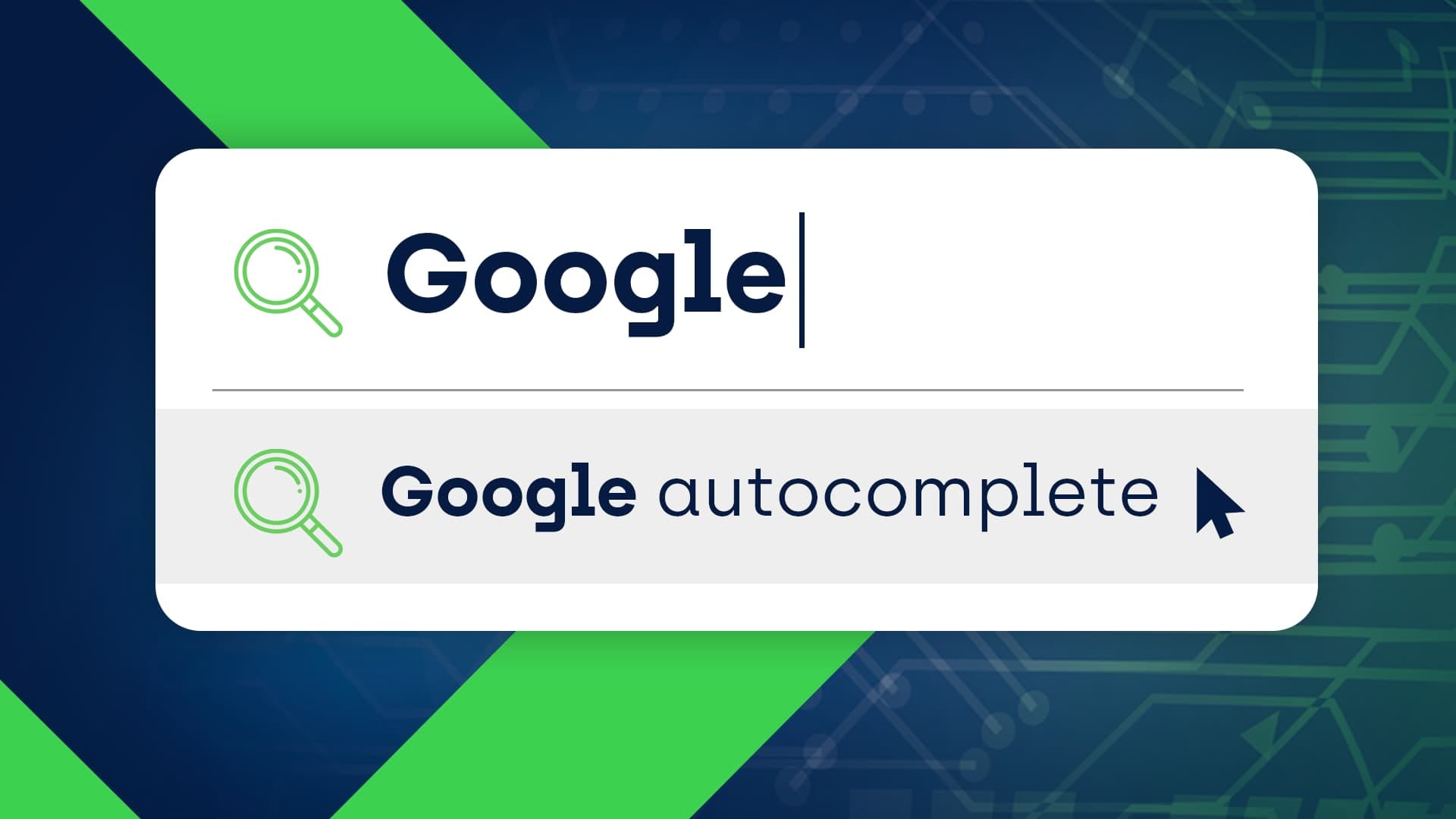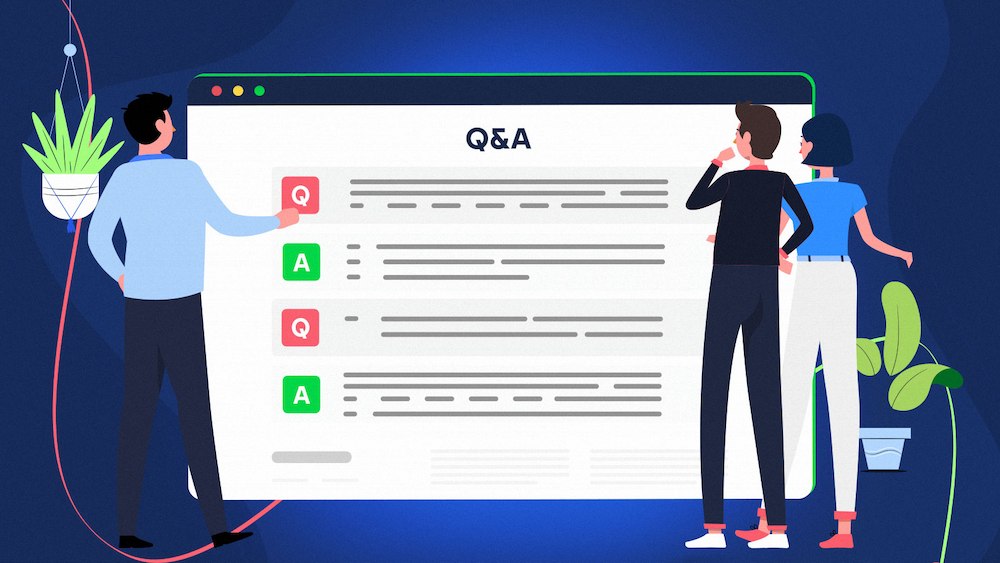If you’re using social media, you are probably aware of the hilarious video interviews from the Wired Autocomplete Interview series.

Wired invites a plethora of celebrities to answer questions that people have been typed into Google about them.
The Autocomplete function has received a lot of attention since its introduction back in 2008. It has inspired countless memes, stirred controversies, and was the basis for creating “the Google game.” In Google Feud, a viral Google search game made in 2013, you gain points by guessing the 10 most popular Google search queries based on the first word.

Google Autocomplete is a powerful tool that, according to Google, saves us 200 years of typing time per day.
How Google Autocomplete works
When you begin typing a search query into the search box, it offers dynamic predictions so you can reach the desired search results page faster. It is available wherever you might find a Google search box: the Chrome bar, Google app for iOS and Android, and the Google homepage.
When Google introduced Autocomplete back in 2008, it must have caused some panic attacks, as it appears to read minds. In reality, it considers several factors and attempts to predict the desired search query.
The user can then continue to type the desired query or choose from among the listed suggestions to save time.
Here are the known factors used by Autocomplete to predict queries:
- Overall popularity
- Current trending
- Search history
- Location
In other words, based on what you’ve been searching for in the past, the country you’re searching from, and the search term data that the search engine has gathered, Google Autocomplete automatically predicts what might be on your mind.
Thanks to this feature, you’re able to reach the answers you need faster, whether browsing on the desktop or in the Google app.
The history of damage control
Previously known as Google Suggest, the service was renamed Autocomplete in October 2010.
The rebranding was likely encouraged by the fact that two months earlier, Google was convicted of defaming a French user, who sued the company upon discovering that the algorithm was associating disparaging terms with his name.
This was not the only case when Google got in trouble for linking inappropriate terms with specific users.
Bettina Wulff, the wife of the former German President, sued Google on similar grounds in 2012 (the case was settled in 2015).
In the face of widespread critiques, Google had to enforce policies on what the algorithm was able to suggest. Over time, the search engine began to exclude controversial search terms from its suggestions despite their search volume. According to Google’s blog, the autocomplete policies exclude the following:
- Sexually explicit, vulgar suggestions (unless the prediction is related to medical, scientific, or sex education topics).
- Hateful terms aimed at groups and individuals based on their race, religion, or other demographics.
- Violent search terms associated with gory or violent content, or terms that relate to content glorifying, trivializing, or advocating for violence.
- Search terms associated with dangerous goods, services, or information.
- Disparaging terms associated with named individuals.
- Suggestions related to piracy.
- Search terms considered to be spam.
There are also two ways in which individual users can affect what terms are excluded from the Autocomplete tool:
- If a search term prediction you encounter is inappropriate, you can report it within the search box by clicking “Report inappropriate predictions.”
- If you have a legal objection to a search term prediction, you can fill out a report form and request its manual removal.
Online reputation management tool
Google’s problems with malicious search predictions reveal the Autocomplete algorithm’s dark side. Any company with a web presence needs to be aware of how its brand is perceived online.
The search console is the place where their customers get their first impressions. This presents both a danger and an opportunity for SEOs and marketers.
A comprehensive SEO strategy should include a plan of taking control of Autocomplete’s predictions. The only way to remove negative suggestions from appearing is to replace them by generating organic traffic to the positive ones.
Optimize for intent
It is essential to predict what people might be looking for when searching for your company and provide them with answers that are easy to find. When organizing your website’s structure, make sure you are consistent with your language. You don’t want two synonymous terms competing against each other for a spot on the Google Autocomplete list.
Join the conversation
Take control of the online discourse about your brand. If you have a review section on your website, encourage your customers to leave a review, and engage with them. External review sites like Yelp deserve your attention as well. Monitor Twitter, as well as other social media and join the discussion to reinforce your positive image. If you don’t address bad reviews, they eventually make their way onto the Autocomplete suggestions list and do lasting damage to your brand.
Respond to current trends
Since Google Autocomplete predictions adhere to current trends first and foremost, there is plenty to gain by proactively addressing them on your website. Here, the Google Trends tool comes in handy.
This free tool lets you research trending search queries by country, daily or in real-time. This data is an endless source of inspiration for creating relevant content. If the trending topic is related to your industry, it offers opportunities you cannot miss.
Research keywords
Although Google no longer offers access to Autocomplete API, it is still possible to access some of the search data that Google Autocomplete uses through Google Keyword Planner. Be sure to cross-check your keyword database with the Keyword Planner tool, as it is directly linked to the Autocomplete function.
Wrapping up
Google Autocomplete requires your attention if you are hoping to build and maintain an online presence.
As an SEO tool, it lets you understand how customers in your industry think and search so that you can optimize your website accordingly.
Just as importantly, Google Autocomplete could potentially be the first impression your customers get about your company. With proper planning and following the best practices, you can use it to your advantage.

Hi! I’m Bartosz, founder and Head of Innovation @ Onely. Thank you for trusting us with your valuable time and I hope that you found the answers to your questions in this blogpost.
In case you are still wondering how to exactly move forward with your organic growth – check out our services page and schedule a free discovery call where we will do all the heavylifting for you.
Hope to talk to you soon!








